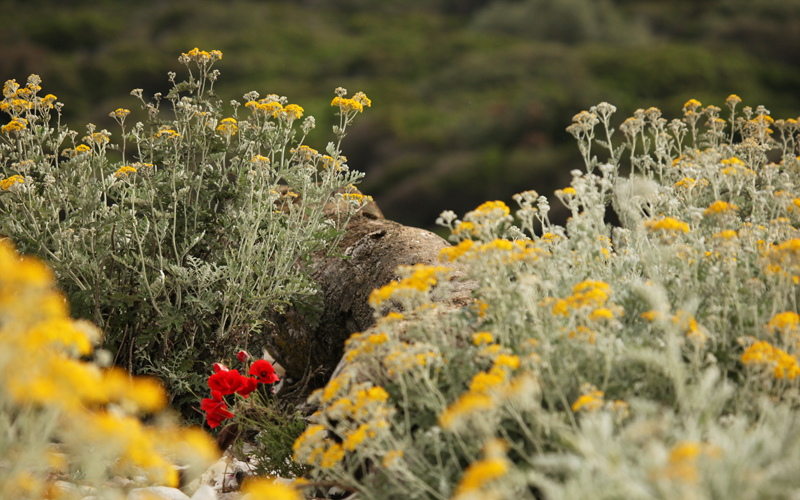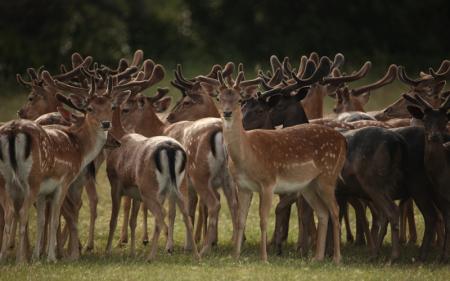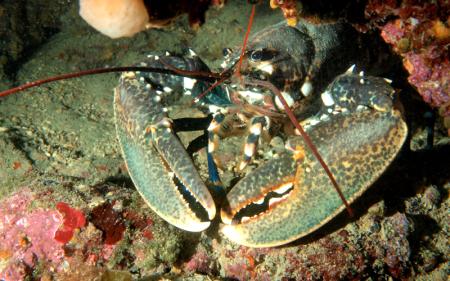Olive tree 1600 years old, the largest surface of holm oak and pine on the Croatian coast, and the Brijuni Mediterranean Garden with 170 autochthonous plant species are just some of the attractions of the Park. The animal world of Brijuni brings together incredibly diverse species in a single area.
This archipelago is where you can meet mouflons, giraffes and the autochthonous Istrian cattle. Bottlenose dolphins swim through the Park waters, and the submarine world is rich in fish and corals.
Plant world

Vegetation is what makes Brijuni so special and valuable. A unique landscape has been created on the Croatian coast of the Adriatic by taking over what used to be agricultural land and by clearing parts of forests, transforming the area into a landscape park with spacious open grasslands. The islands of Brijuni have all the characteristics of the Mediterranean. They are located in the Mediterranean phytogeographical region, which is why most of the flora on the islands has genuine Mediterranean characteristics. Some plants with significant presence on the islands are particularly endangered in Croatia (horned poppy, wild cucumber, and some grass species). Typical holm oak forests can be found on several locations on the islands of Veliki Brijun and Mali Brijun. In addition to that species, one also frequently come across mock privet, strawberry tree, turpentine tree, mastic, laurestine, true myrtle and tree heath. The forest is rendered almost impenetrable by climbing plants: common smilax, fragrant virgin's bower, wild asparagus, Lonicera implexa and evergreen rose. Autochthonous holm oak forests are not merely lungs, but also an ornament of Brijuni.
Forest and the macchia
Holm oak forests with bay laurel are particularly prominent in the eastern part of Veliki Brijun (hills of Kosir, Javornik, Saluga and Kaštel). Nowhere on the Croatian coast can one come across so many integral spaces with mixed stands of holm oak and bay laurel, which is one of the important and interesting aspects of the Brijuni archipelago.
Macchia can be found on all the islands. The most beautiful macchia, up to eight meters high and thick to the point of opacity, is still preserved on the peninsula of Peneda (on the island of Veliki Brijun). On the islands of Vanga and Mali Brijun, one comes across the best-preserved macchia in this part of the Mediterranean.
Landscape parks and grasslands
This component of the Brijuni landscape pertains almost exclusively to the island of Veliki Brijun, with approximately 40 percent of its surface covered by landscape parks and grasslands. The culture of landscape cultivation in the Brijuni archipelago dates back to the beginning of the previous century. Two persons, Paul Kupelwieser and Alois Zuffar, deserve particular praise for the landscape we witness today, for they created the first stylistically organized Mediterranean garden in Europe of their time. They incorporated autochthonous plants into the landscape, but also exotic plants, which have been present on Brijuni for almost one century. Several holm oak trees from that period are superb individual examples of the species, with the diameter of their crowns reaching up to 20 meters, and they mark and provide identity to individual hills and vistas. Wild game has impacted considerably on the unique visual character of these trees – up to the height of two meters, there are simply no branches (given the fact that shoots and leaves are eaten by wild game). As a result, crowns have the appearance of an umbrella, as if carefully molded by a gardener.
Mediterranean Garden of Brijuni
The Mediterranean Garden of Brijuni is a true garden attraction within the National Park, covering the surface of 17,000 square meters. The main aim of establishing the Brijuni Mediterranean Garden was to enrich the destination and to create a representative garden that fits into other natural, cultural and historical attractions of the National Park. Nowadays, the Mediterranean Garden includes around 170 species of various autochthonous and exotic plants on specially designed surfaces, which are marked by QR code tags providing additional information about individual species.
Old olive tree
Old olive tree is a sub-species of the semi-wild variety of buža (which is an autochthonous Istrian variety). In the 1960s, carbon analysis was performed by applying carbon-14 radioactive isotope, in order to determine the age of the olive. According to the analysis, the olive tree is approximately 1600 years old.
Animal world

The fauna of the Brijuni National Park is quite diverse and rich, not only in terms of numbers, but also in terms of species. With its remarkable and specific microclimate, the islands of Brijuni provide thriving conditions for a number of autochthonous (domestic) and allochthonous (introduced) animal species.
This specific and unique area provides opportunity for visitors to meet many animal species within a single, brief walk: fallow deer, squirrel, rabbit, or any of the many birds belonging to the rich ornithofauna of Brijuni, such as the sandwich tern, red-throated loon, western marsh harrier, or grey heron. In addition, exotic species are also present in the archipelago, a testimony to the interesting history of Brijuni. As early as 1910, a zoo was opened on the island of Veliki Brijun, also envisaged as an acclimatization station for wild animals from the tropical climate zone on their voyage to European zoos.
In the northern part of the island of Veliki Brijun, in a large enclosed area, a Safari Park was set up in 1978, with exotic herbivores as tenants, most of them gifts to the then-president Josip Broz Tito. When it comes to exotic species and the current inhabitants of the Park, one can see zebras, llamas, zebus, as well as Lanka the she-elephant from India, pygmy goats and Shetland ponies. Ethno Park houses domestic animals, such as the boškarin cattle of Istria, Istrian donkey, sheep and goats, as well as other autochthonous species. In the part of the complex referred to as Pheasant Farm, pheasants are no longer bred, but you can see the turkeys of Zagorje, guineafowl, common chaffinch, scarlet macaw, and there is also a winter residence of Koki the cockatoo, who spends wintertime in heated space here.
The fauna of the islands of Brijuni is subject to intensive research. The archipelago is a favorite destination of scientists, who can engage in high-quality research on a number of animal groups in the area.
Wild game (fallow deer, axis deer, mouflon) was introduced to Brijuni towards the beginning of the twentieth century, and today it adorns the forests, parks and hills of Brijuni, constituting a significant part of archipelago’s identity and providing a special experience to visitors. Peafowl contribute to the special atmosphere of peace and harmony in the parks of Brijuni, enchanting the visitors as they spread their tail feathers.
Due to the diverse plant world, many insects have found their home here. Butterflies are a major attraction, with other groups present in large numbers too, such as beetles, cicadas, dragonflies and mosquitoes. The latter were quite an issue in this area towards the end of the 19th and the beginning of the 20th century, when malaria was still present on the islands. It was Robert Koch, a renowned bacteriologist, who saved the population from malaria and the infectious mosquitoes. Today, it is bats who take care of maintaining the balance when it comes to mosquitoes. According to research, as many as 14 bat species live in the area of the Park.
Herpetofauna on Veliki Brijun and individual smaller islands includes bullfrog, European pond turtle and the green whip snake. There are no poisonous snakes in the territory of the Park.
The autochthonous bird world is rather well represented, thanks to individual smaller islands providing ideal conditions for the nesting of seagulls, terns and European shags. The islands of Brijuni represent one of the most important nesting sites of the European shag species in the northern Adriatic.
Saline (Soline) are an enclosed wet habitat with three swampy areas 12 hectares in size, in effect representing a protected ornithological park. Brijuni are a very important seasonal residence of northern bird populations, and this particular locality has made it possible for rare and protected species to remain in the area for longer. The arrival of great egret, black stork and Eurasian bittern proves the significance of this locality for such rare and endangered species as well, finding not only peace here, but also sufficient quantity of food.
A pond that stood here as a remainder of wetlands was turned into a lake with flamingos in Kupelwieser times. During the reign of President Tito, the place was enclosed, and turtles, goldfish and mosquitofish were introduced. The latter species, being so efficient in consuming larvae of mosquitoes and other insects, is frequently introduced into various wet habitats throughout the world with the aim of preventing malaria.
Submarine world

Marine area represents almost 80% of the total surface of the National Park.
The fish fauna is what makes the submarine world of Brijuni so extraordinary, and so different from all the other parts of northern Adriatic. When it comes to fish, the most frequent species include common two-banded seabream, white seabream, European conger, gilt-head bream, common dentex, red scorpionfish, salema and brown meagre.
Deeper and darker habitats are inhabited by precoraligenic and coraligenic communities. They are founded upon green and red algae, with a number of sponges, polychaetes, tunicates, moss animals and other organisms. These communities are best developed in crevices and rare caves. When it comes to coral groups, sunset cup coral and cushion coral are two of the most frequent types of stony corals.
The biggest depth of 50 meters has been measured south of the cape of Peneda. On a sea floor such as this one, frequent residents include sea urchins, brittle stars and sea stars. When it comes to protected species in Park waters, one frequently comes across bivalves, such as the noble pen shell (Pinna nobilis) and date mussel (Litophaga litophaga), as well as sponges, such as the branching sponge (Axinella cannabina) and golf ball sponge (Tethya aurantium). In the submarine world of Brijuni, there are also several endemic Adriatic species: the best known are brown alga Fucus virsoides and tunicate Polycitor adriaticus.
The submarine world of Brijuni is home to Posidonia oceanica meadows, commonly referred to as “seagrass”. Posidonia is an endemic species in the Mediterranean, and its meadows are considered to be the most significant community in the coastal area. In addition to representing a habitat to many sea organisms, these meadows are also important in terms of the production of oxygen – which is why people frequently refer to them as lungs of the sea.
In addition to Posidonia, the waters of Brijuni include three other seagrass species inhabiting the Adriatic: common eelgrass (Zostera marina), dwarf eelgrass (Zostera noltii) and the most frequent species, little Neptune grass (Cymodocea nodosa).
The waters of Brijuni are important fish spawning grounds, with the cove of Javorika as an important spawning area.
When it comes to protected marine vertebrates in the waters of Brijuni, one can frequently see sea turtles (with loggerhead sea turtle as the most frequent species) and dolphins (with bottlenose dolphin as the most frequent species).